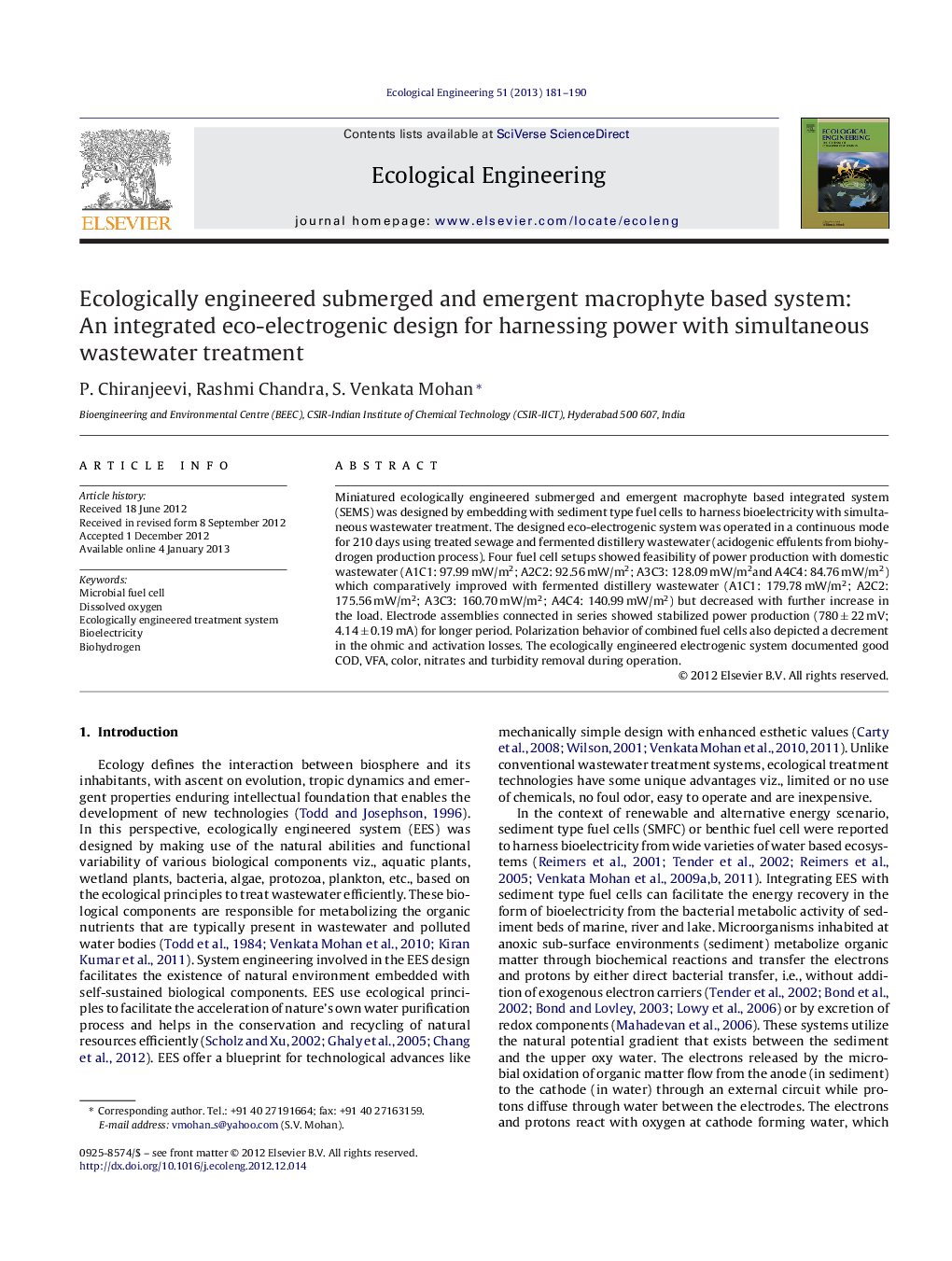| Article ID | Journal | Published Year | Pages | File Type |
|---|---|---|---|---|
| 4389843 | Ecological Engineering | 2013 | 10 Pages |
Miniatured ecologically engineered submerged and emergent macrophyte based integrated system (SEMS) was designed by embedding with sediment type fuel cells to harness bioelectricity with simultaneous wastewater treatment. The designed eco-electrogenic system was operated in a continuous mode for 210 days using treated sewage and fermented distillery wastewater (acidogenic effulents from biohydrogen production process). Four fuel cell setups showed feasibility of power production with domestic wastewater (A1C1: 97.99 mW/m2; A2C2: 92.56 mW/m2; A3C3: 128.09 mW/m2and A4C4: 84.76 mW/m2) which comparatively improved with fermented distillery wastewater (A1C1: 179.78 mW/m2; A2C2: 175.56 mW/m2; A3C3: 160.70 mW/m2; A4C4: 140.99 mW/m2) but decreased with further increase in the load. Electrode assemblies connected in series showed stabilized power production (780 ± 22 mV; 4.14 ± 0.19 mA) for longer period. Polarization behavior of combined fuel cells also depicted a decrement in the ohmic and activation losses. The ecologically engineered electrogenic system documented good COD, VFA, color, nitrates and turbidity removal during operation.
Graphical abstractFigure optionsDownload full-size imageDownload as PowerPoint slideHighlights► Ecologically engineered system was designed with submerged and emergent macrophyte. ► Embedded fuel cell assemblies showed good bio-electrogenic activity. ► Biological components influence both treatment efficiency and electrogenic activity. ► Eco-electrogenic design documented practical applicability with economic feasibility.
